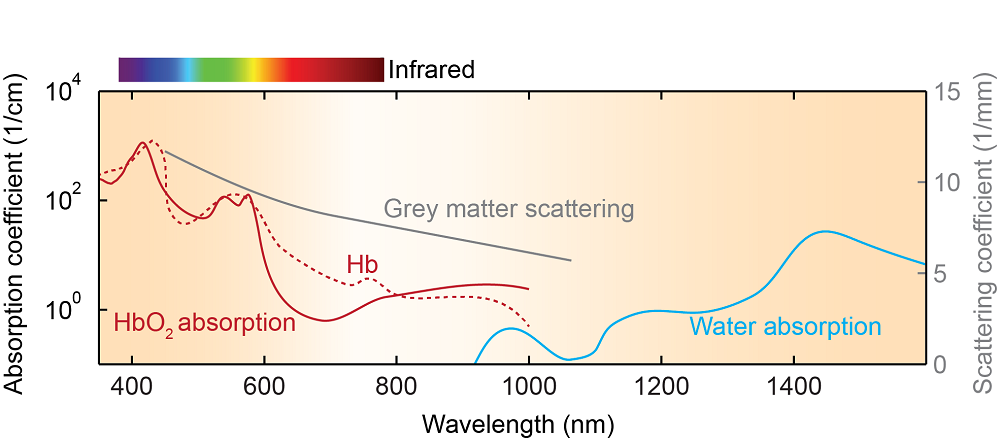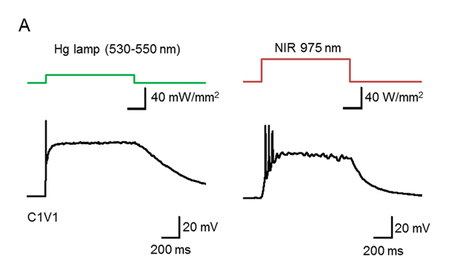Upconversion: NIR in, vis out

Compared to visible (vis) light, near infrared (NIR) wavelength scatters less and is less absorbed in brain tissue. If your fluorescent target absorbs vis light, then one way to use NIR is to flood the area with molecules that will absorb NIR and emit vis light. The process is called “upconversion“, since it is in contrast to the more common process of higher energy (shorter wavelength) light being converted into lower energy (longer wavelength) light. The effect looks superficially similar to two-photon absorption, but it’s a very different physical process.
Hososhima et al. got this to work with optogenetics.

Markita Landry’s lab is another working in this general area to keep an eye on.
To go in the opposite direction, one could use GCaMP6, (NIR) 2p excitation, and then a molecule that will absorb green vis light and emit in a further red wavelength. The bigger the Stokes shift the better. Or a large pseudo Stokes shift.
[…] Interesting idea in this post at Labrigger: […]